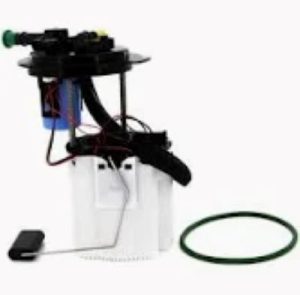Because of the internal combustion engine (ICE) and electric motor in a hybrid car, fuel pumps operate differently than those found on conventional gasoline vehicles. Hybrid vehicles frequently run in electric-only mode at low speeds or during idle, so the fuel pump is not always powered. Fuel pump still inoperative during EV mode (a typical design on most hybrids), cutting off only when gasoline engine is needed. This is also why the pump may outlast the regular 100-150,000 miles pumps typically last in a conventional car because they are rarely cycled (at least not like this).
The ECU (Engine Control Unit) in a hybrid car regulates the operation of its fuel pump, controlling when and how much fuel gets delivered based on engine demand. Those include parameters such as speed, load and state of charge (SOC) for the electric drive battery that will trigger operation of the pump with a request from the combustion engine. Fuel delivery changes based on the hybrid's dynamically transitioning operating mode, helping optimize efficiency. Industry reports on the hybrid fuel system told similar stories: this exacting control of a pump's dispensation can save as much as twenty percent in wasted fuel over non-hybrid pumps because the pump only cycles when and for an appropriate length to keep high pressure needs met without sending more vapor laden gas down stream than necessary. ~ANGLESITERュ
Finally, fuel pumps on hybrid models are usually of the electric variety (of which there have long been low-power designs) just as a matter matching power to autoload--every little bit helps.Flooring it? This type of pump usually operates at 12V or 24V, and it either adjusts the fuel pressure to maintain within-spec (typically, anywhere from about 30~80 psi) as required by an AMFID hybrid model. Variable-Speed Fuel Pump — Some hybrid systems employ fuel pumps that vary pressure with demand on the fly, to help save gasoline. Automobile efficiency studies indicate that these variable-speed pumps would add another 10% to hybrid vehicles' energy efficiencies the very goal being pursued by their over-all design.

A low-pressure sensor that can trigger a warning if fuel pressure falls too far while transitioning between gasoline and electric power is an uncommon trait in hybrid fuel systems. This sensor alerts the ECU, allowing it to rapidly modulate fuel pump output for a seamless switch from one power source to another. A too sudden application of power without proper fuel pressure can cause what feel like flat spots or hesitation, but this is one of the things that are managed by a good sensor and ECU. Hybrid models have this incorporated by fuel pump manufacturers and stressed as critical, since seamless transitions are extremely important in these applications both for performance and the driver experience.
Get a Fuel Pump for hybrid systems, use HD-series manufactured products and things will make you remember them for good performancefuelNotFoundenergetic. For electric and regular operation, these pumps also need to work seamlessly with hybrid-specific ECU programming as well as pressure regulation systems in order for the most appropriate application of both function types.
